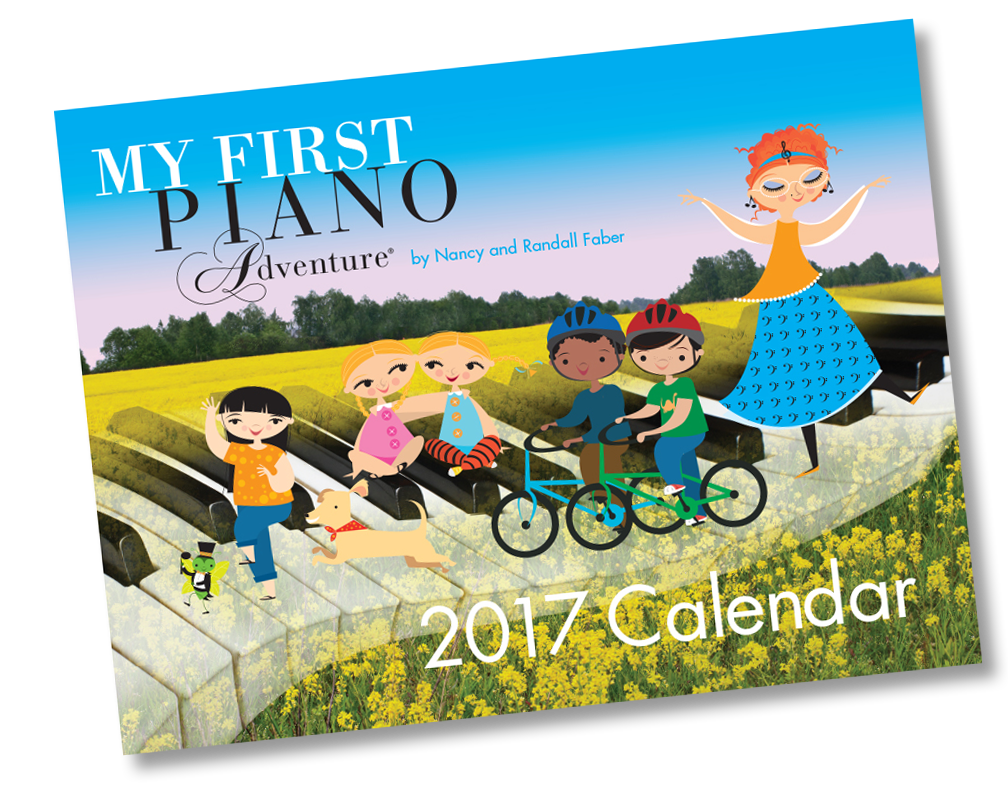Level 2A, Performance, Pg. 6-7, Theme and Variation Listen to this classical dance come to life as Nancy guides Philip through the “choreography” of the musical phrases. Nancy describes the left hand as the man and the right hand as the lady, dancing together as they play slurs that slide down…
Read more →
Blog


Faber Piano Adventures in cooperation with Hal Leonard is pleased to announce a limited time promotion for piano teachers and their families in the U.S. and Canada. Visit any music retailer from Nov. 23 to Nov. 28 and purchase $25.00 in Piano Adventures publications — receive a free 2017 My First Piano Adventure Calendar…
Read more →

Level 1, Lesson Book, Pg. 40 In this video, Nancy guides Phillip through a “spooky half-step” activity. This compositional game actively engages Phillip and allows him to demonstrate his understanding of half-steps in a creative and expressive way. Short creative forays at the lesson allow the student’s personality to emerge,…
Read more →

Level 1, Technique and Artistry, Pg. 6, Wrist Float-Offs Ending a phrase with a gentle lift is a technical “secret” that will last a lifetime. Suggesting that a balloon lifts the wrist and guides it to float up and off captures the idea of flexibility and relaxation. Trying the “wrist…
Read more →

Level 1, Technique and Artistry, Pg. 12 Vivian’s popcorn is crisp and bouncy. The white keys are a “stovetop” sure to produce “super” staccatos, whether loud or soft. A simple F-A-C accompaniment keeps the beat steady and reinforces the staccato. It also leads to an improvised exchange between “talking” popcorn…
Read more →

Level 1, Technique and Artistry, Pg. 8 The difference between legato and staccato is not just a matter of technique. Playing each touch also involves listening. Quick changes between staccato and legato and phrases in which the touches vary prepare the hand and the ear to respond in different settings.…
Read more →

Level 1, Lesson Book, Pg. 33, Russian Sailor Dance Playing in different ranges sounds different and feels different. “Old,” “Young Adult,” and “Child” sailors have separate moods, dynamics, and speeds. The accompaniment varies, too, in keeping with the “age” and tempo. At slower tempos there is time and need for…
Read more →

Level 1, Lesson Book, Pg. 38, Two-Note March Talk about bringing tonic and dominant to life! What begins as a simple piece expands into ear training and harmonization. All these activities sharpen Emily’s attention, listening skills, and imagination in the most natural, musical way. Changing ranges and tempos shows Emily…
Read more →

Level 3A, Performance Book, Pg. 16, Malagueña Spanish music invites liberties—like bending the rhythms and adding melodic flourishes to the modal harmonies. The triplets in this dance make elastic circles, and Sam adds a bit of original rhythmic spice to the melody. The melodic dips in the middle section surge…
Read more →

Level 2A, Technique and Artistry Book, Pg. 12, Colorful Sunset Guiding a student to play artistically connects movements with sounds. This happens gradually as the student focuses on certain elements of music-making, then begins to fuse these as pieces vary and become more sophisticated. Here the sun glows warmly as…
Read more →

